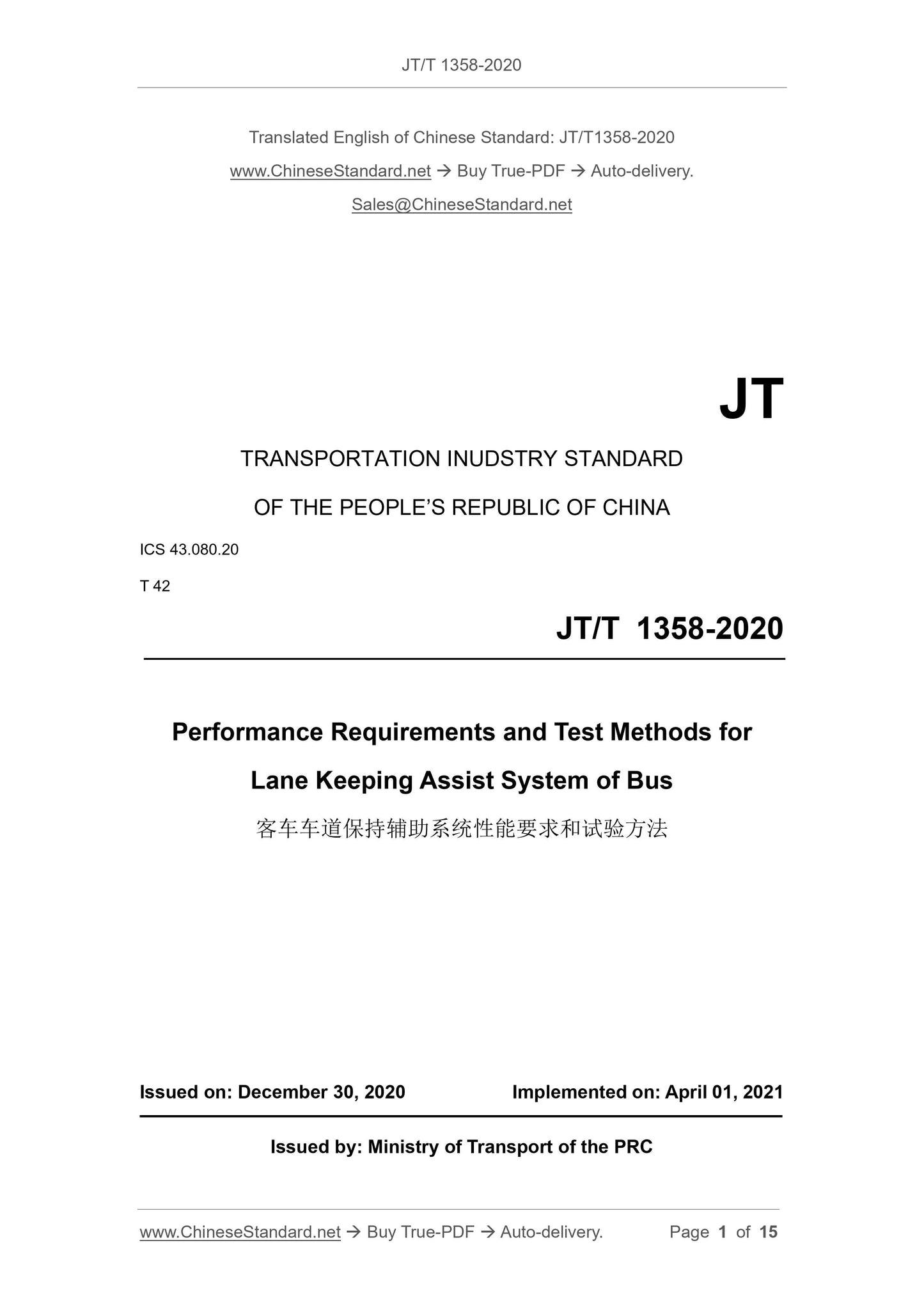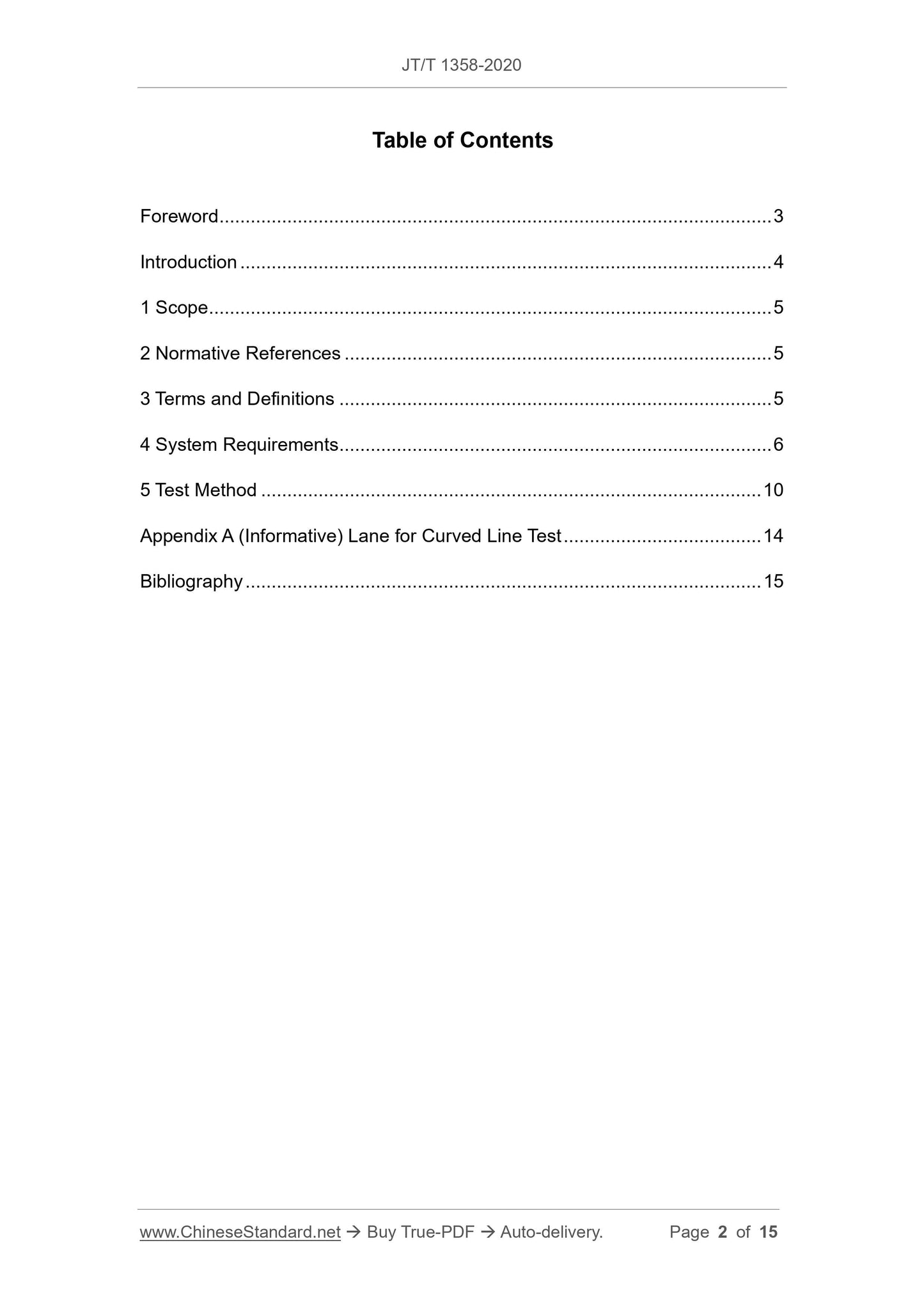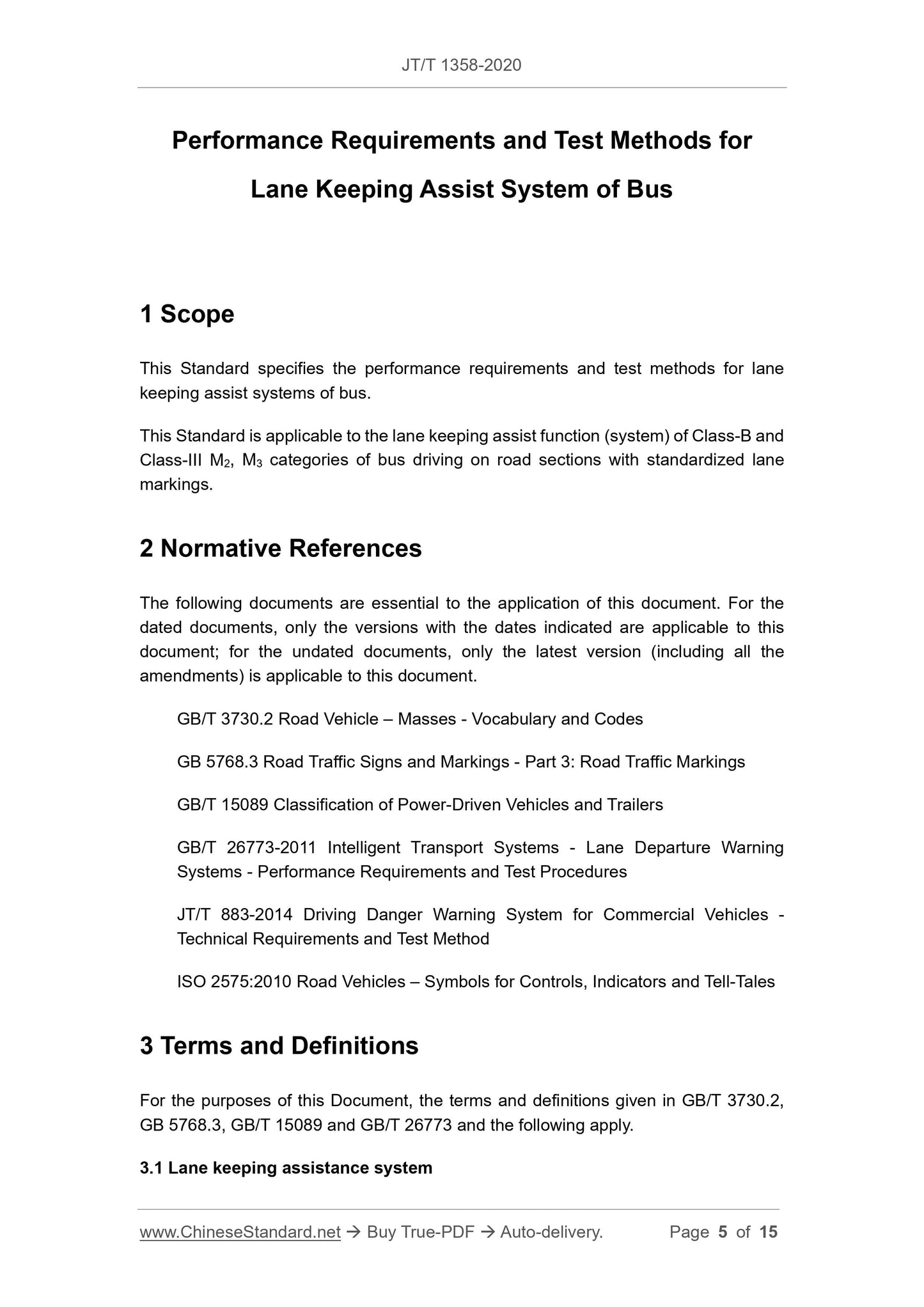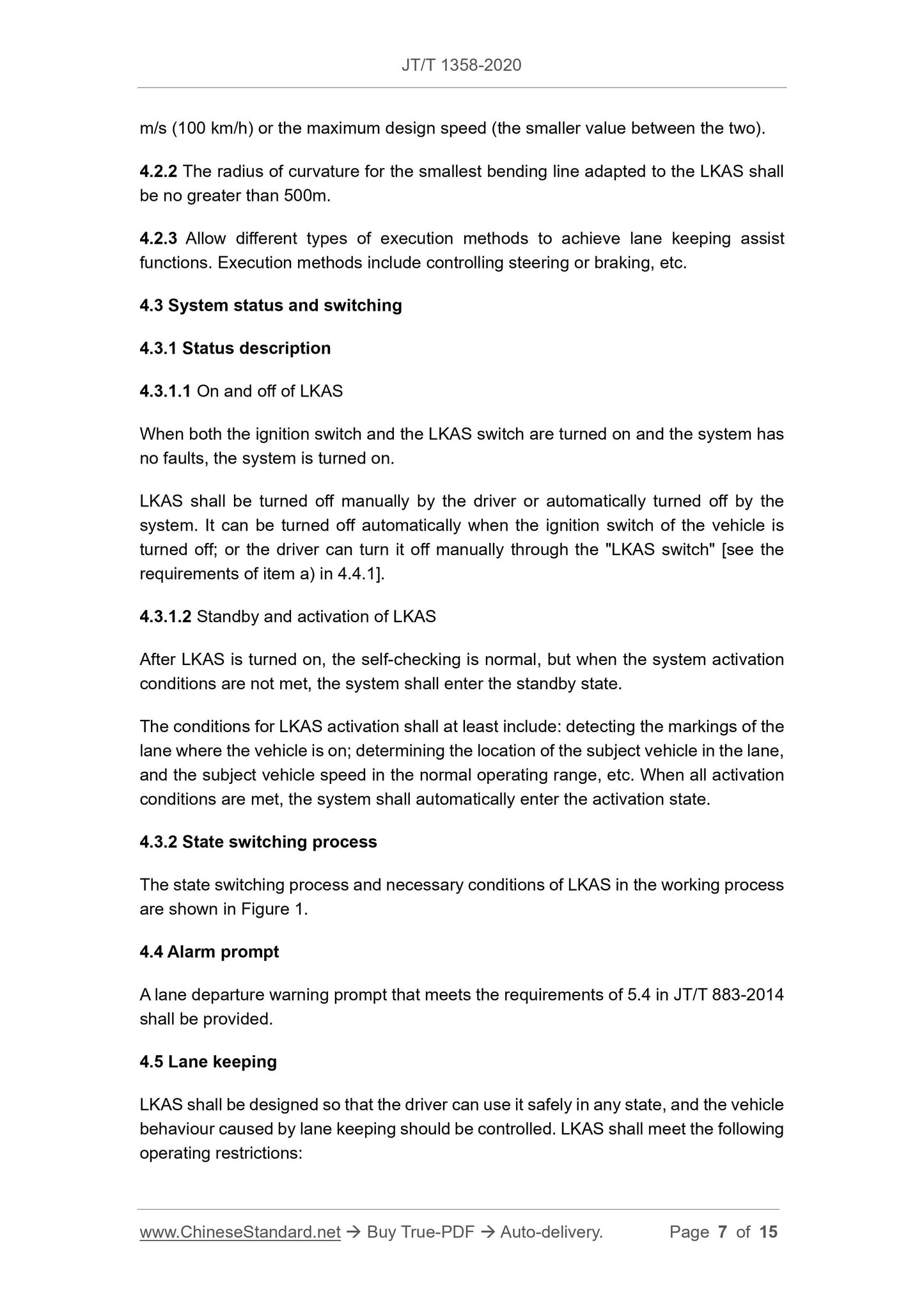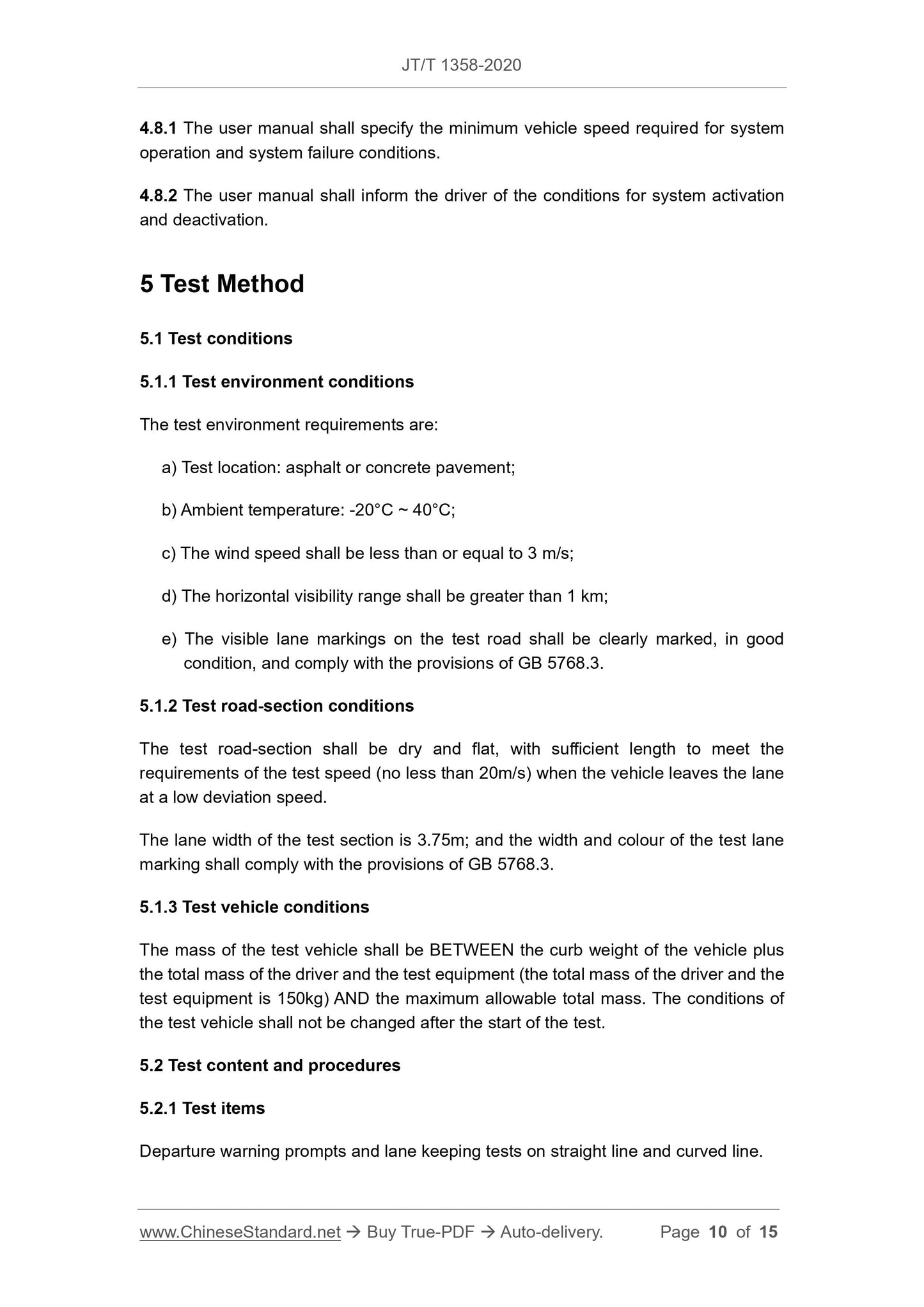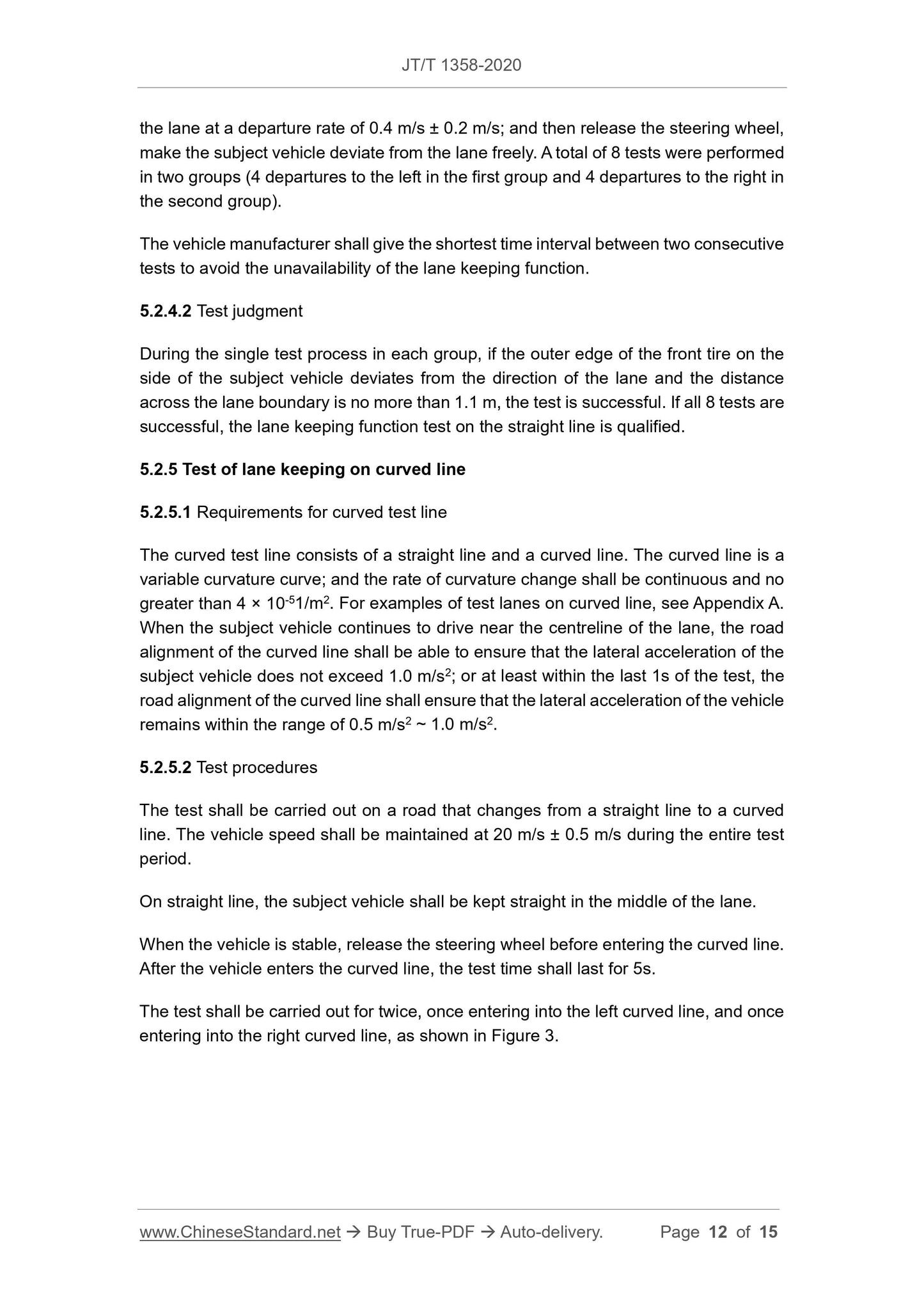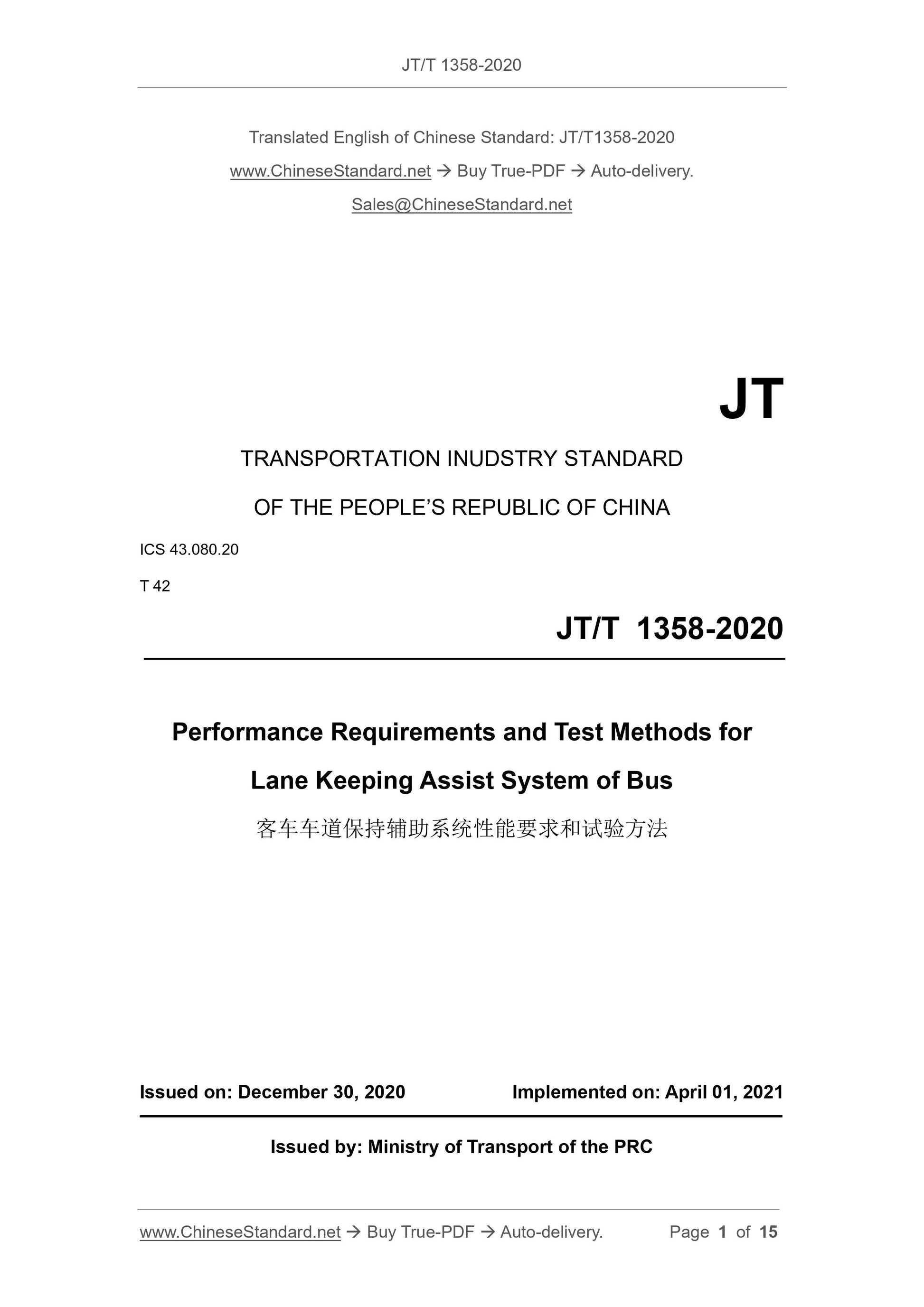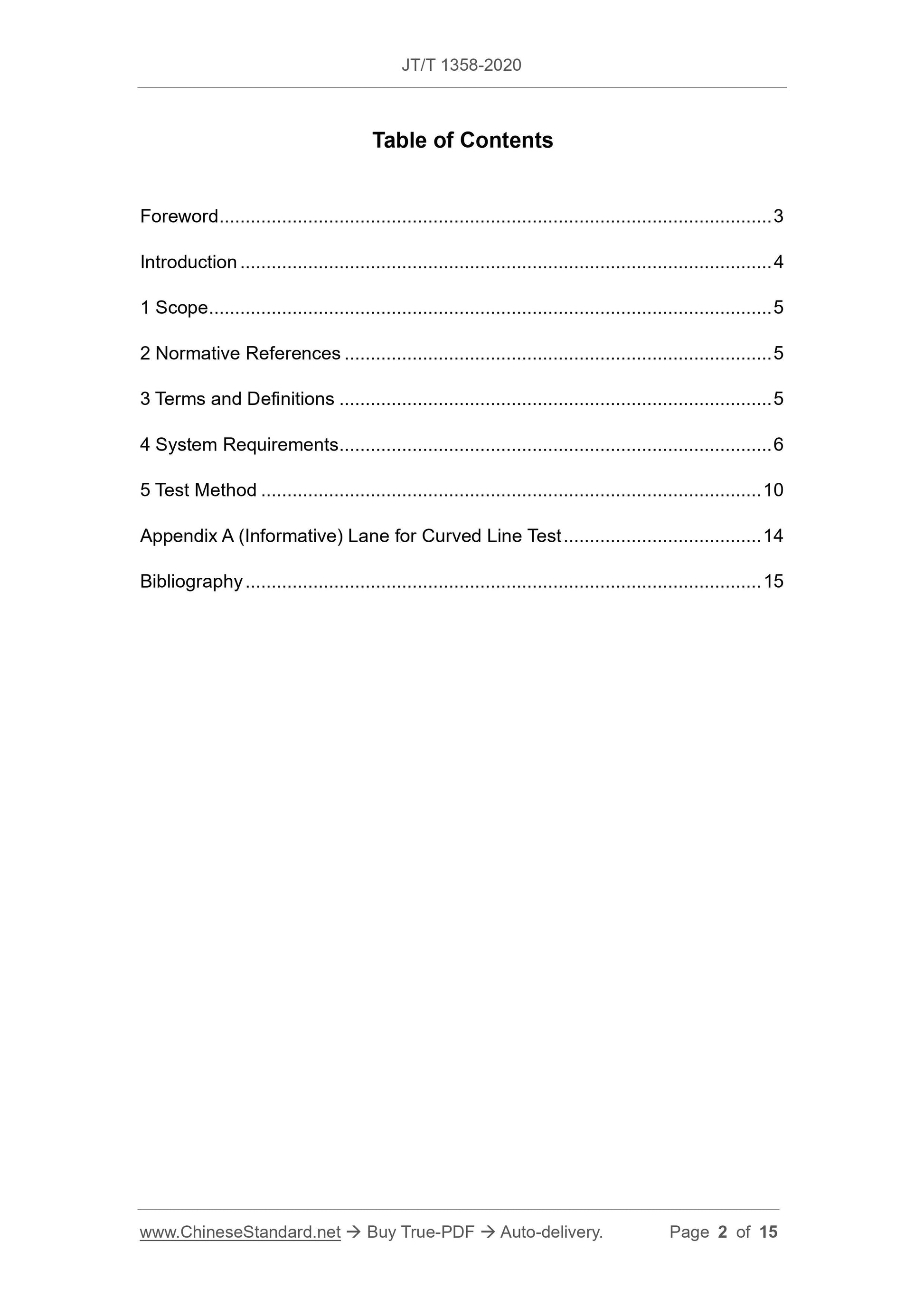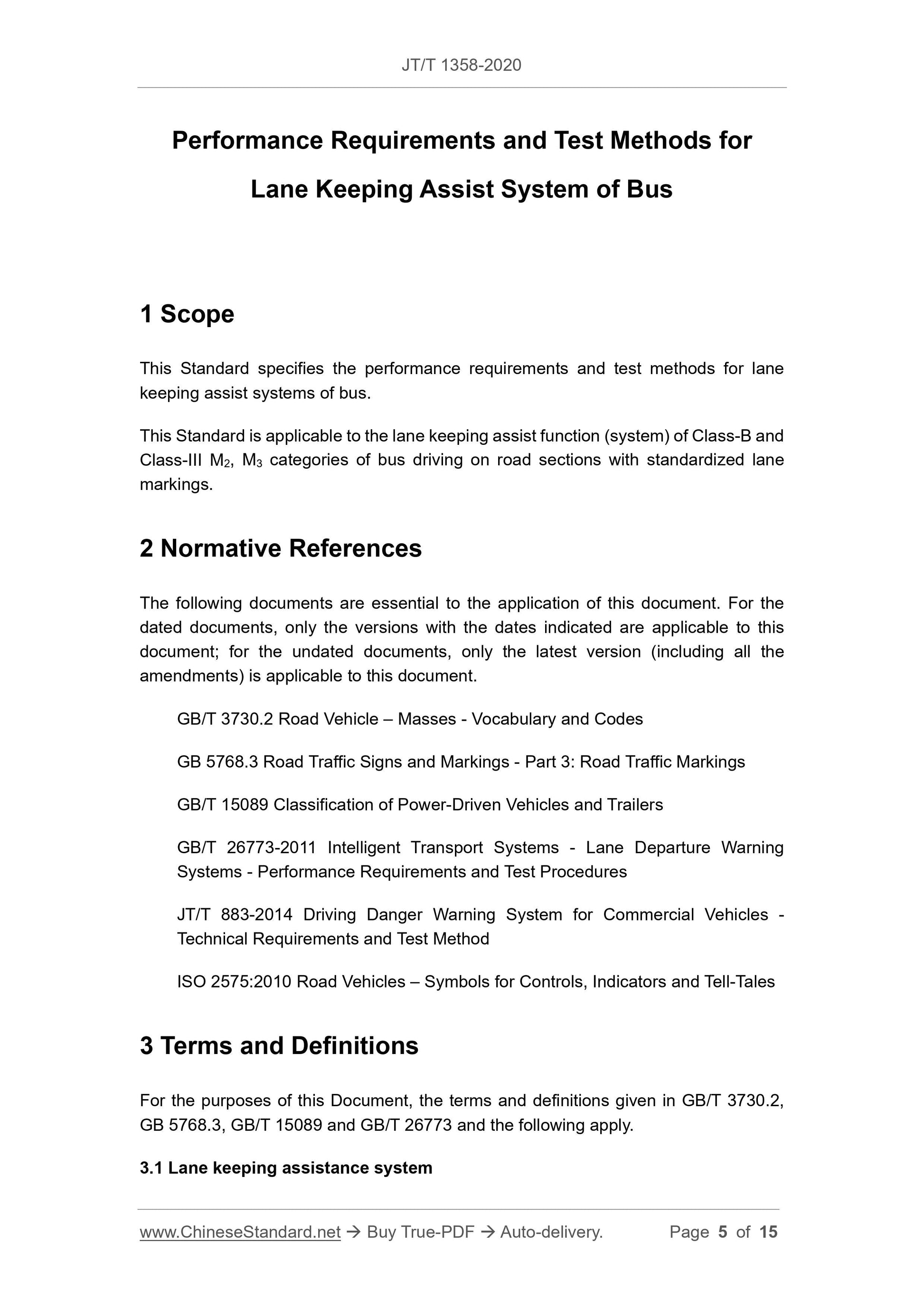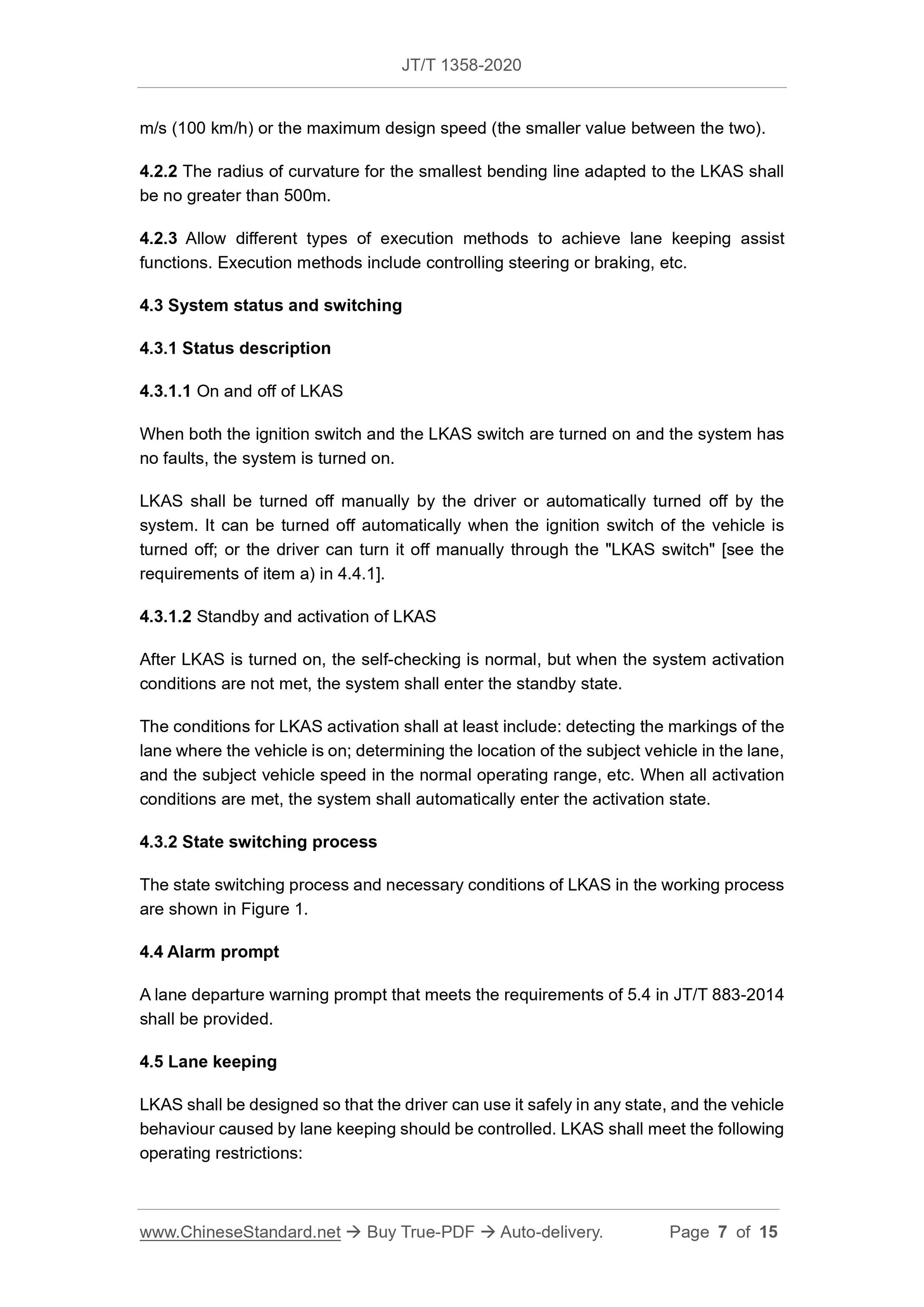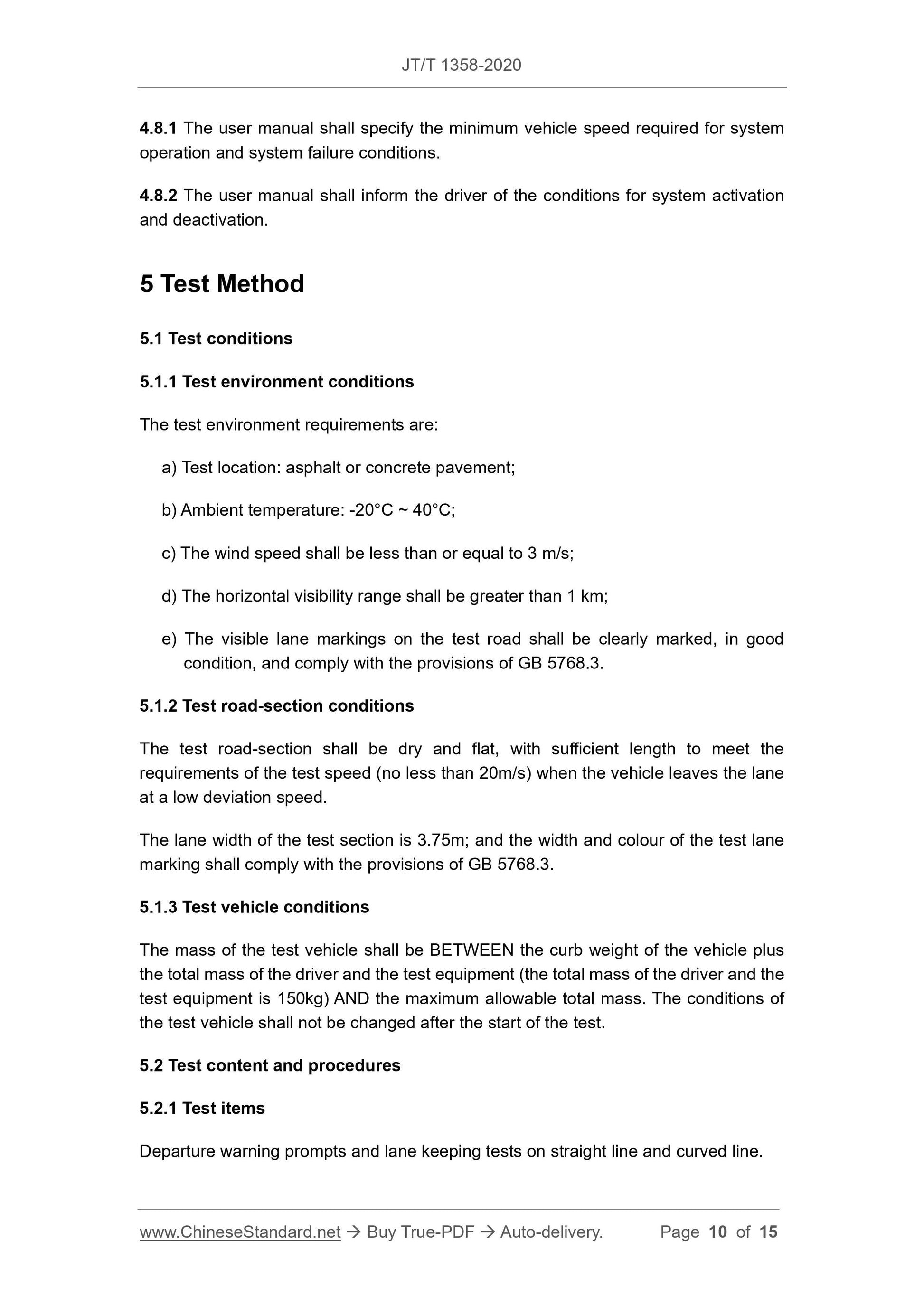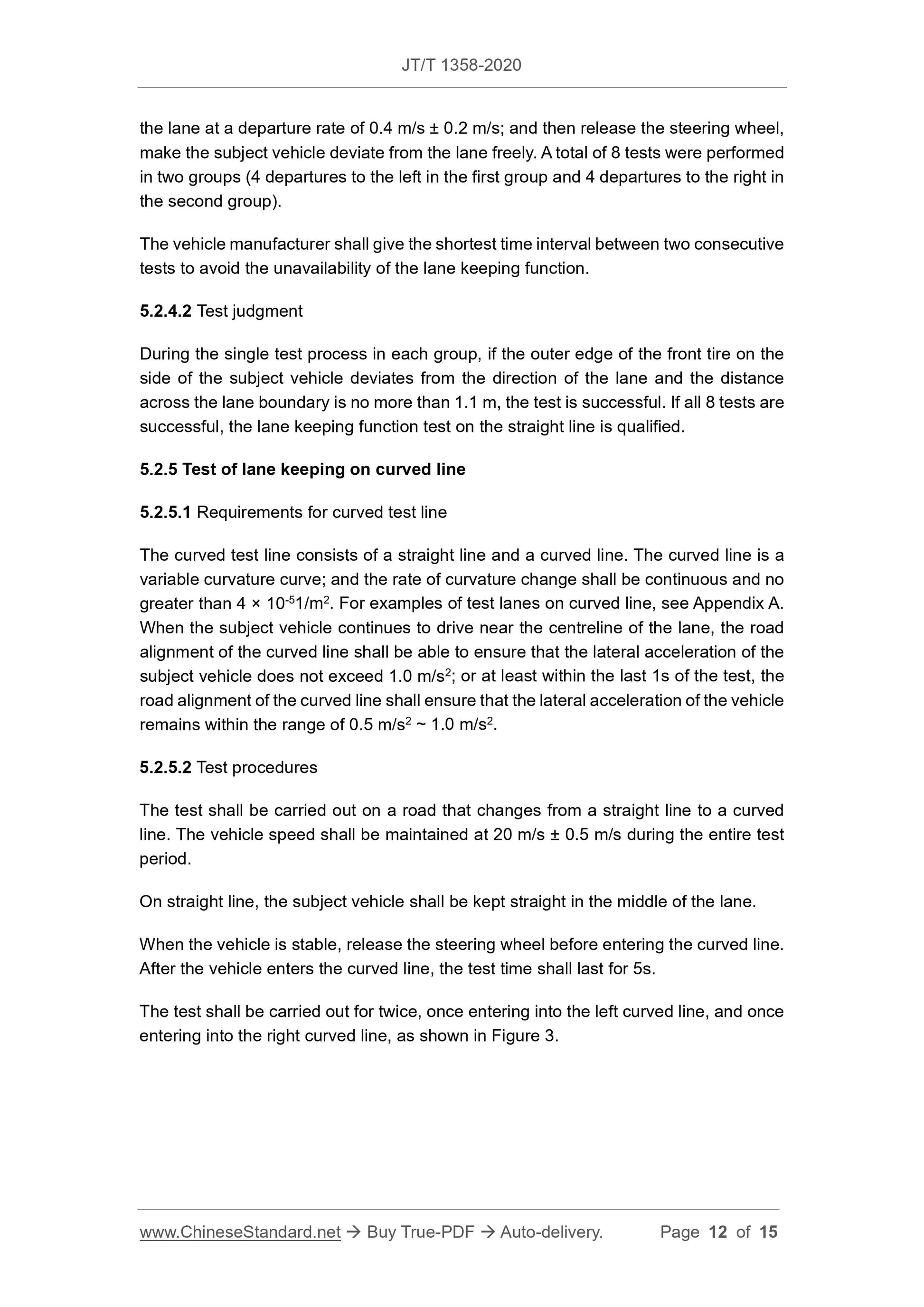1
/
of
6
www.ChineseStandard.us -- Field Test Asia Pte. Ltd.
JT/T 1358-2020 English PDF (JT/T1358-2020)
JT/T 1358-2020 English PDF (JT/T1358-2020)
Regular price
$200.00
Regular price
Sale price
$200.00
Unit price
/
per
Shipping calculated at checkout.
Couldn't load pickup availability
JT/T 1358-2020: Performance requirements and test methods for lane keeping assist system for bus
Delivery: 9 seconds. Download (and Email) true-PDF + Invoice.Get Quotation: Click JT/T 1358-2020 (Self-service in 1-minute)
Newer / historical versions: JT/T 1358-2020
Preview True-PDF
Scope
This Standard specifies the performance requirements and test methods for lanekeeping assist systems of bus.
This Standard is applicable to the lane keeping assist function (system) of Class-B and
Class-III M2, M3 categories of bus driving on road sections with standardized lane
markings.
Basic Data
| Standard ID | JT/T 1358-2020 (JT/T1358-2020) |
| Description (Translated English) | Performance requirements and test methods for lane keeping assist system for bus |
| Sector / Industry | Highway and Transportation Industry Standard (Recommended) |
| Classification of Chinese Standard | T42 |
| Word Count Estimation | 12,164 |
| Date of Issue | 2020-12-30 |
| Date of Implementation | 2021-04-01 |
| Regulation (derived from) | Announcement No. 104 (2020) of the Ministry of Transport |
| Issuing agency(ies) | Ministry of Transport |
Share
